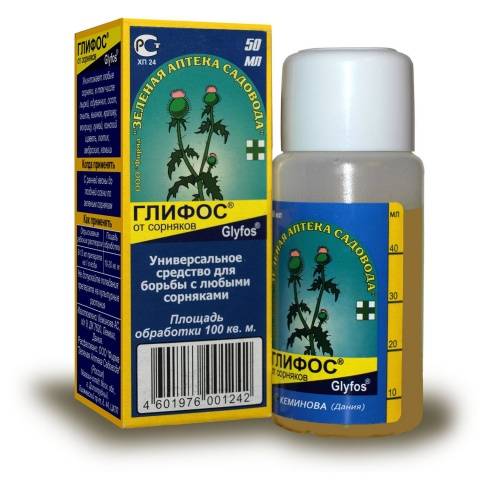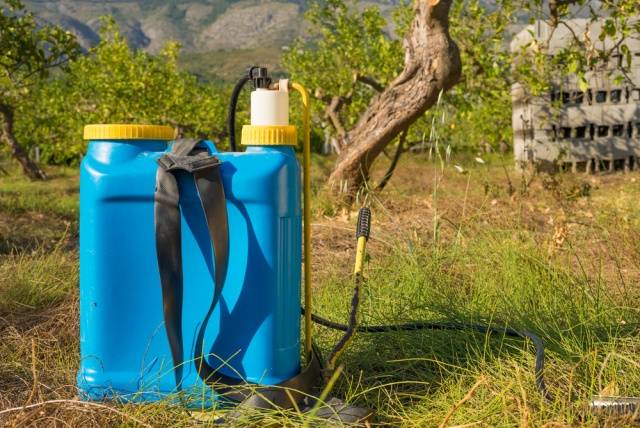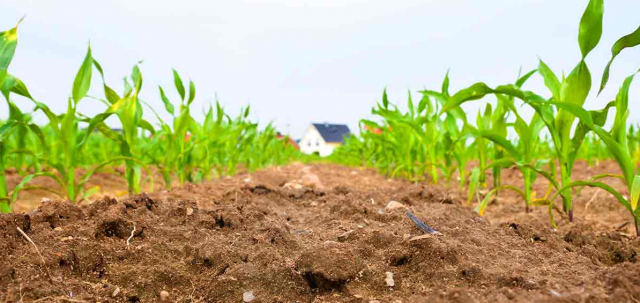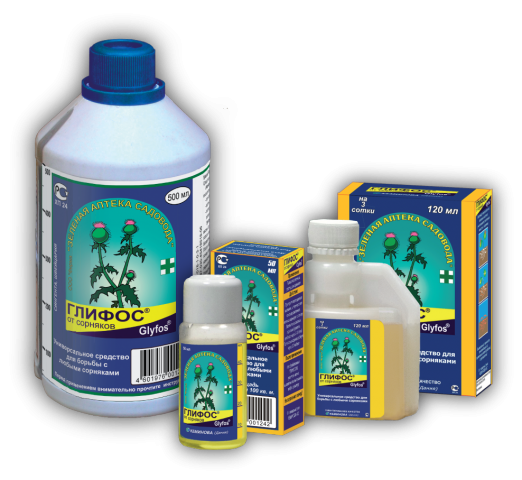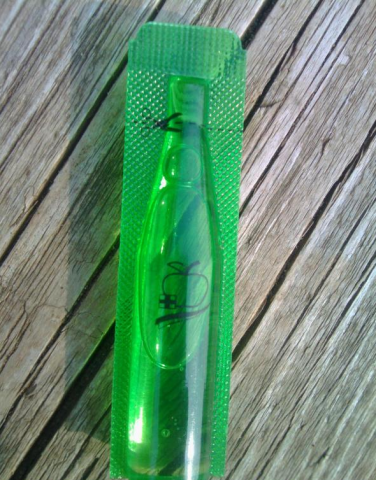Content
Fight against weeds gives gardeners and summer residents a lot of trouble. If you don't have time to hand weed, you can use herbicides to kill weeds.
Glyphos is a dangerous agent for weeds and cultivated plants, destroys all vegetation in the application zone. It is a continuous chemical.
Indications for use
Since Glyphos destroys all vegetation in its path, it cannot be used after the emergence of cultivated plants. In what cases can this herbicide be used?
- When fighting grass near paths, buildings, along fences. During the season, the treatment should be repeated 1-3 times.
- Preparation of a plot of land for sowing a lawn. Weed control should be started 1–1.5 months before sowing grass seeds.
- If necessary, the total destruction of vegetation in the process of cultivation of a neglected or untouched piece of land.
- Weed control in the area in early spring or immediately after harvest.
Operating principle
The herbicide Glyphos is absorbed by the leaves and stems of the weed, as a result of which not only the aerial part of the plant perishes, but also the root system. In the process of death, the leaves of the weed turn brown, wither and completely die off.
How dangerous is the drug
Glyphos is practically non-toxic, as a result of which it does not pose a significant threat to birds, worms, fish and bees. However, it is better to limit the flights of bees for a period up to 12 hours after the treatment of the field, allocating for them a zone far from the cultivated area of land.
Benefits of Glyphos against weeds
There are a number of advantages to consider when choosing a weed killer:
- Practically 100% result from application.
- The preparation contains a water softener and a high-tech surfactant, due to which the effect of the preparation is stable, regardless of the quality of the water and even the weather conditions.
- The remedy destroys monocots, dicotyledons, cereal and malignant weeds.
- Can be used for mixing with sulfonylureas and phenoxyacids herbicides.
How to store the product
If you bought a larger volume of Glyphos than you needed, then you can save it for the next treatment. The instructions for use of Glyphos from weeds indicate the temperature range at which the drug can be stored without losing its qualities. So, at temperatures from -15 to + 40 ° C, the product remains unchanged. If the temperature in the room where the preparation is stored is below –15 ºС, then it will need to be mixed more thoroughly before use, but the properties of Glyphos will not be lost. The shelf life and use is 5 years.
The period of plant death after treatment
The period of weed death after Glyphos injections is different. It all depends on the type of weed:
- Annuals fade after 3 days.
- Perennials begin to die after 7-10 days.
- Shrubs and trees - after 20-30 days.
How to prepare a solution
In order to destroy weeds on 1 hectare of land, you will need 5 liters of the diluted preparation. Glyphos is bred taking into account the variety of weeds:
- For the destruction of dicotyledons and annual cereals weeds need to be diluted with 80 ml of the product in 10 liters of water.
- Dicotyledonous cereal perennials require the introduction of more poison, since they have a more powerful root system. So, you will need 120 ml of Glyphos per 10 liters of water.
So, in order to quickly and effortlessly cope with weeds, you need to accurately follow the recommendations and instructions for the drug indicated in the article. Remember that Glyphos is a strong solid substance, so it is best to use it before planting crops.
Testimonials
We also invite you to watch an overview video about Glyphos:
